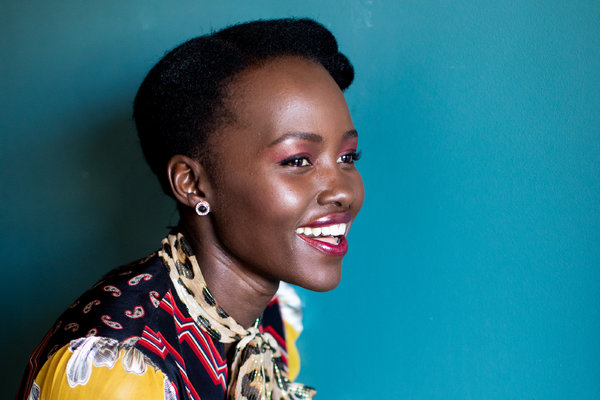When the producer Simon Fuller reached out to Lupita Nyong’o to gauge her interest in narrating his latest project — a wildlife documentary directed by John Downer — the Kenyan-Mexican actress was intrigued. But once she watched the first two episodes, she was sold.
Ms. Nyong’o understood that these shows can be mundane and repetitive, telling the same stories of how animals live in the wild. “Serengeti” stood out because of its attention to specific animals and their day-to-day lives, which includes fighting within their clans, searching for love and trying to survive when outsiders are ready to attack.
The documentary, which was filmed on a game reserve in Tanzania over two years, feels more like a dramatized TV show than a documentary, but drama is part of its appeal. It follows several animals in the park, including Kali, a lioness who has been exiled from her pride and is struggling to raise her cubs alone; Bakari, a baboon who is trying to figure out how to win back a female baboon’s affection after another male gets her attention; and Zalika, a hyena who becomes queen of her clan sooner than she expected. The British actor John Boyega narrates the British version of the show, which premiered on BBC One earlier this month.
Over the course of six episodes, viewers get to know the animals “more from their own perspective” as Ms. Nyong’o described, and become invested in their journeys and experiences, much in the way people become attached to human characters on other shows and movies.
Ahead of the show’s American premiere on the Discovery Channel next month, Ms. Nyong’o spoke with The Times about why she agreed to narrate the show, her favorite destinations and shared her best travel skin care tips.
What about “Serengeti” appealed to you?
After seeing the first two episodes, I loved where Simon was coming from and was really taken by it. I was engaged, learning about specific animals. There’s a personal relationship with specific animals and you hear about the dynamic of their species and clan. You form this personal relationship with them.
I’ve also watched many of these documentaries, but I’ve never heard them narrated by an African and seldom a woman. To be both of those things and be the one telling the story is exciting.
What’s different about this wildlife documentary, compared to others?
What is fresh about this documentary is that we do spend a lot of time with very particular characters — the animals — and it offers us a chance to see things from their perspective and I think that’s why it becomes our story. When I say that this is “our story,” it resonates deeply with me because it is something that means a lot to me. This is an inclusive story.
What would you say to someone who is curious about the documentary, but isn’t the most interested in animals, or isn’t familiar with the Serengeti?
To each his own, I guess, but I think it’s really important to recognize that nature doesn’t need us, we need nature.
What are some of your favorite destinations?
I love Mexico and I love New Orleans, and I really do love my country. I think East Africa is just incredible. I’ve been going on safari all my life and every time it is dwarfing, humbling and incredibly fascinating. It never grows old and it’s never the same. Time is suspended when you’re on safari because you have to wake up really early and your job is to watch, look out and listen.
What’s the one thing you can’t travel without?
This is a hard question. Eyedrops.

Do you have any travel skin care tips?
Sunscreen is the name of the game, but I think it’s also really important to find products that are not poisonous to the world we live in. I carry calendula ointment, which is a good healer for burns, scrapes, scars. I had a terrible sunburn and the oil cured me of it in just one night. I swear by it. I guess that’s really the one thing I wouldn’t travel without.
Is there anything in particular that you like to do when you travel?
I really love nature travel. I prefer to visit natural places like the Grand Canyon, or a lakeside. I enjoy observation and a good hike. I visited the Grand Canyon and that was incredible. That’s another place that will dwarf you. Mind blowing. It reminds you how small we truly are.
What’s your favorite mode of transportation?
I really like trains because you get to see the countryside and I like the kind of chug, chug, chug — the sounds they make. I like that you get to see the world pass you by and see a lot of land. It feels quaint.
Do you have any exciting trips coming up?
Unfortunately not, but I really want to visit Brazil. I haven’t been yet.
This interview was edited and condensed for clarity.
52 PLACES AND MUCH, MUCH MORE Follow our 52 Places traveler, Sebastian Modak, on Instagram as he travels the world, and discover more Travel coverage by following us on Twitter and Facebook. And sign up for our Travel Dispatch newsletter: Each week you’ll receive tips on traveling smarter, stories on hot destinations and access to photos from all over the world.






